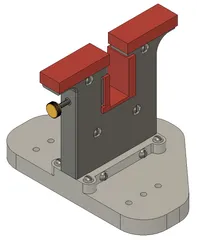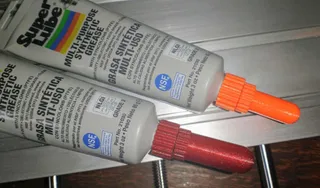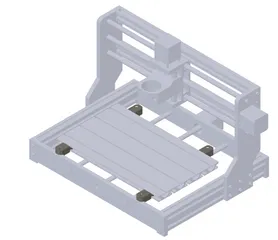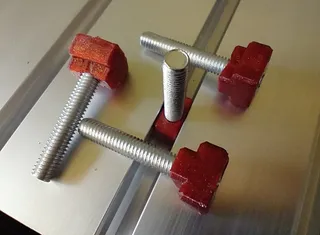XRF Sample Press and Sample Rings
Description
PDFThis model includes sample holder rings and cups, designed for use with Chemplex etnom XRF films. These were designed to be used with a Bruker Tracer 5 handheld XRF spectrometer for measuring elemental composition of crops.
The sample ring (or cup) is placed in the press tool, a measured amount of sample is added, then the press tool cover is placed on top. A small arbor press (like a 1-ton press from Harbor Freight, SKU 3552) is used to compress the sample into the ring. Markings in 1 mm increments, along the outer edge of the sample press base indicate how thick the compressed sample is.
The sample rings are just a single ring. The sample cups are two rings, the smaller of which nests into the larger one. A piece of etnom film is placed between the rings, so that it forms a thin film across the bottom once the rings are clamped together. Both sample rings and sample cups can be repeatedly re-used (after cleaning & replacing the film).
V4 Press Tooling
16.89 mm diameter sample aperture inside ring.
8 mm tall inside ring for sample.
Ring shoulder OD is 24 mm.
Approx. 2 cc sample to get 5 mm thick sample.
For OurSci crop samples, 16.89 mm diameter ID for V4 should give:
- 1.12 cm^3 compressed volume
- 2.0005 cm^3 uncompressed volume
Note also that the v4 sample cup (split ring for capturing etnom film) has a shoulder contour for holding the funnel, just like the sample ring (which is the non-split ring, which doesn't capture the etnom film).
The mandrel was designed for cleaning up the XRF cups to hold the etnom film. The XRF cups can't be toleranced tightly enough when 3d printed, so instead they're printed too tight and the inner ring has the outside cleaned up using a chisel with a mandrel in a drill as a lathe. Based on 2.5" 5/8-11 thread hex head screw. Large enough for printing in plastic, small enough to fit inside of the pieces to be turned down and have a portion that can be inserted into a drill. The inner cup should be trimmed down just enough that it fits into the outer ring and holds the xrf film. This whole process is awful and hazardous to the user. If you plan to do this, I strongly recommend using a lathe instead, and being extremely careful.
I printed all of these parts with a FiberForce Pantone 13-1009 TPG PLA filament. This is one of the most opaque filaments that I have worked with, and nearly approximates a ceramic in appearance. It has worked well for these parts, and makes it easy to spot contamination by most samples. Note that as a PLA material, it is heat sensitive and will deform above approximately 50 degrees C. These parts are all printed as 100% fill, as they are subject to high forces when used in the arbor press.
Tags
Model origin
The author hasn't provided the model origin yet.




